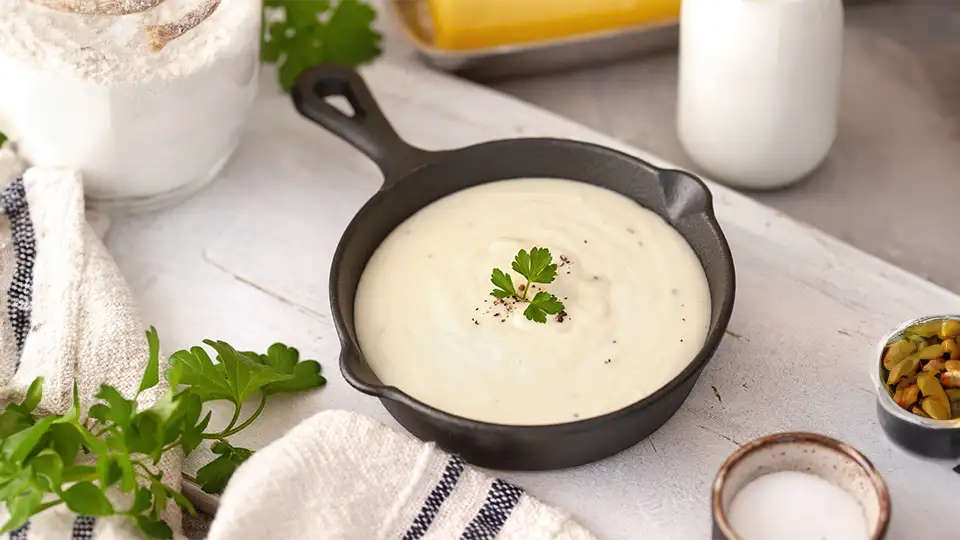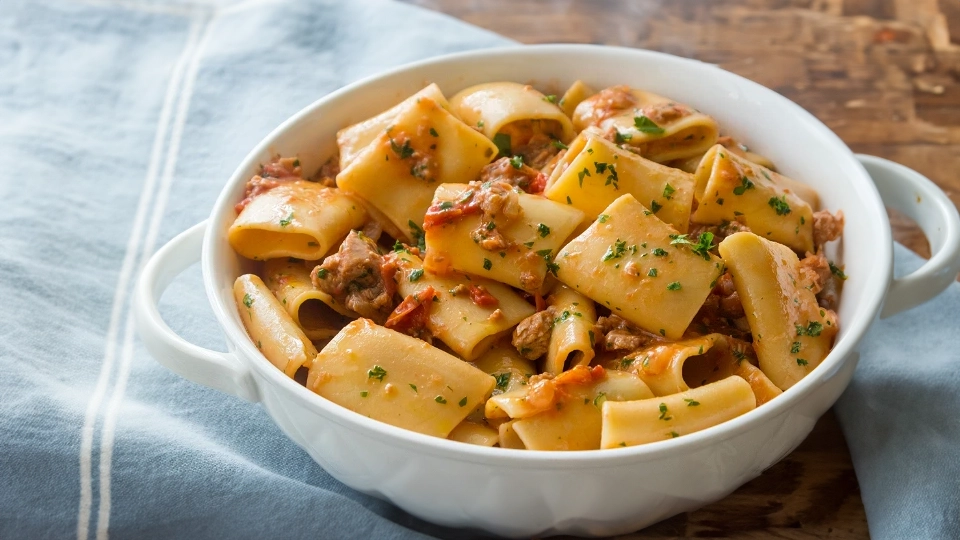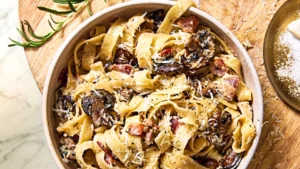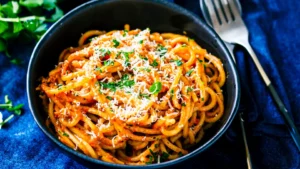Bolognese, the very essence of umami, embodies comfort and warmth in a single, slow-cooked pot. Known in Italian kitchens as ragù alla bolognese, this deep, rich meat sauce is a cornerstone of many celebrated Italian dishes. Bringing out the best flavors in your bolognese isn’t just about the ingredients; it’s about the precision and patience in the cooking process. This guide is your gateway to mastering the art of bolognese right from the heart of your home kitchen.
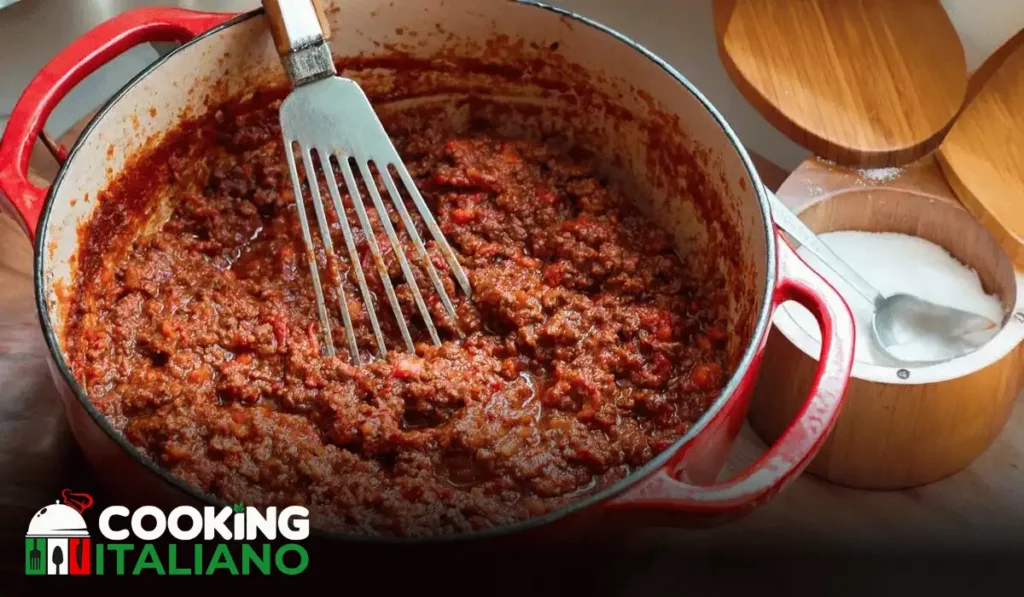
Cooking a perfect bolognese sauce is a culinary quest that rewards dedication and attention to detail. Beginners may find comfort in its straightforward technique, while adept cooks will relish in the nuances that can elevate a good bolognese sauce to greatness.
Bolognese Sauce

Ingredients
A quality bolognese hinges on the freshest ingredients, and though the list may seem extensive, each element is pivotal in the ensemble of flavors.
The Main Players
- 1 medium onion, finely chopped
- 1 celery stick, finely chopped
- 1 medium carrot, peeled and finely chopped
- 3 tablespoons of olive oil
- 3 garlic cloves, minced
- 2 ounces of pancetta, chopped
- 1 pound of ground beef
- 1 cup of white wine
- 1 cup of whole milk
- 1 cup of beef or chicken stock
- 1 can of crushed tomatoes
- Salt and black pepper to taste
- Freshly grated nutmeg
Note: When it comes to bolognese, the quality of meat and canned tomatoes should be the best you can afford. It truly makes a noticeable difference.
The Flavor Infusion
- Fresh or dried thyme
- Fresh or dried oregano
- 1 bay leaf
- A pinch of sugar
- Red pepper flakes for heat (optional, to taste)
Instructions
Creating a perfect bolognese is as fulfilling as the hearty twirl of a fork full of tagliatelle. Here’s a step-by-step guide slicing through the layers of complexity.
- Prepare your ingredients by washing, chopping, and measuring to make sure everything is ready when you need it. This eliminates the stress of scrambling mid-cook and ensures a smooth process.
- In a heavy-bottomed pot, heat the olive oil over medium heat. Add the onion, carrot, and celery (the holy trinity known as soffritto in Italian cuisine). Cook until softened and just beginning to caramelize, around 10 minutes. This forms the aromatic foundation of your bolognese sauce.
- Push the soffritto to the sides of the pot, creating a well in the center. Increase the heat and add the pancetta to render its fat. Once it starts to lightly brown, mix it with the soffritto.
- Now, lower the heat and add the ground beef, breaking it into small pieces with a spoon. Cook until no longer pink. Season with salt, pepper, and a pinch of nutmeg.
- Add the wine, scraping up the flavorful brown bits stuck to the bottom of the pot (this is where the magic happens). Simmer until most of the liquid has evaporated, infusing the meat with a rich taste.
- Pour in the milk and bring the sauce to a simmer. The milk’s acidity complements the wine, tenderizing the meat and mellowing the tomatoes’ tartness.
- Now, it’s time to add the stock, tomatoes, and the bouquet garni of thyme, oregano, bay leaf, and sugar. Stir and bring to a gentle simmer. This low heat cooking will meld the flavors, tenderize the meat, and create that characteristic depth of taste.
- This is the crucial step where patience is rewarded. Allow the sauce to simmer slowly for at least 2 hours, stirring occasionally. If the bolognese sauce starts to look dry or the meat seems too firm, add more stock or water as needed.
- Once the bolognese has thickened to your liking, adjust the seasoning. Remove the bouquet garni and any excess fat that has risen to the surface. Your bolognese is now ready to be generously draped over al dente pasta or nestled between layers of silky lasagna.

DID YOU MAKE THIS RECIPE?
Tag @amcookingitaliano on Instagram and hashtag it #amcookingitaliano!
Tips for Customizing Your Bolognese
Cooking is a creative art, and your bolognese is a canvas awaiting your personal flourish. Here are a few ways to tweak the classic recipe to your taste.
Play with the Meat
Bolognese traditionally uses a mix of ground meats in Italy. Try adding ground veal or pork for a more complex, layered flavor. You can even use ground turkey for a lighter, leaner version.
Vegetarian Twist
For a meatless ragù, use finely chopped mushrooms or lentils. They provide a hearty texture and umami-rich flavor that blends beautifully with the sauce.
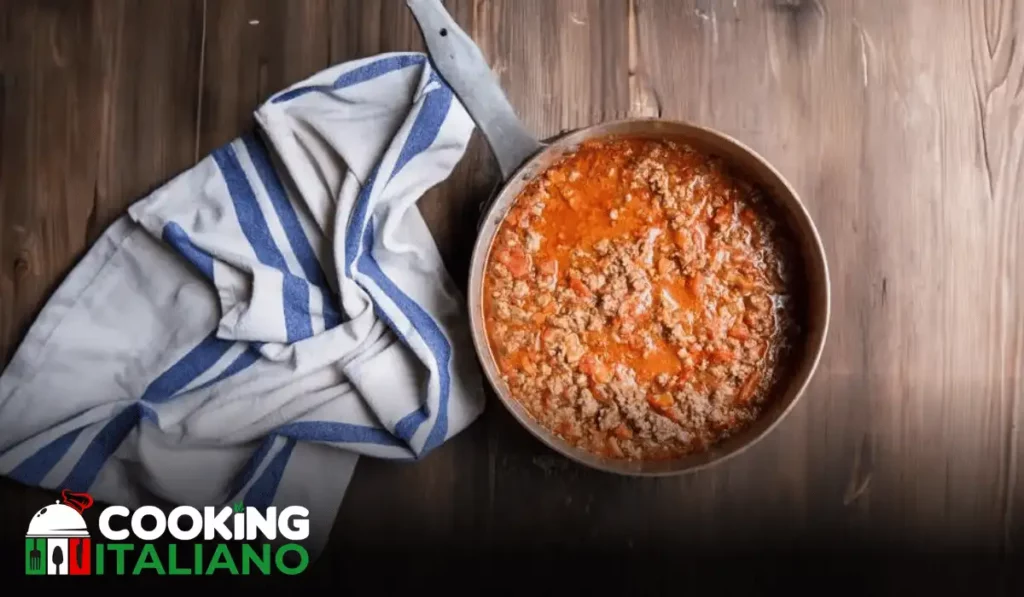
Perfect Texture
The secret to an elegant bolognese is its texture. The meat should be tender and the sauce thick, coating the pasta without being soupy. Achieve this by finely mincing the vegetables and taking your time with the simmer.
Saucy Variations
Some like it hot. Others prefer a bay leaf’s gentle whisper. Adjust the amount of seasoning and aromatics to suit your palate, and feel free to switch up the herbs and spices.
Storing Your Bolognese
Bolognese is one of those dishes that tastes even better the next day as the flavors have had time to meld. Store it in the fridge for up to four days or freeze for a hearty weeknight meal later. When reheating, do it slowly over low heat, adding a splash of water or stock if necessary to keep it from drying out.
Conclusion
The humble bolognese sauce has become synonymous with Italian comfort food. Following this guide, you are now equipped to craft a bolognese that would make Nonna proud. Remember, the key to a remarkable bolognese lies in the quality of your ingredients, the meticulous attention to detail, and, of course, the love you infuse into every stir. Enjoy the saucy adventure!
FAQs
Q1: Should I use white or red wine in my bolognese?
A1: Red wine is the traditional choice for bolognese. It imparts a rich, bold flavor that complements the meat and tomatoes beautifully.
Q2: Can I leave out the milk?
A2: While the milk isn’t mandatory, it does offer a subtle creaminess that balances the sauce’s acidity from the wine and tomatoes. If you’re lactose intolerant, you can try using a non-dairy milk alternative, or leave it out altogether.
Q3: My bolognese is too watery. What can I do?
A3: If your sauce is too watery, continue simmering it uncovered to allow more liquid to evaporate. You might also consider adding a slurry of flour and water or tomato paste to assist with thickening.
Q4: Can I cook bolognese in a slow cooker or Instant Pot?
A4: You can adapt bolognese for a slow cooker or Instant Pot. Using these methods will save time and allow you to set it and forget it, but the flavors won’t develop quite as deeply as with traditional cooking methods on the stovetop. If time is not a concern, we recommend the stovetop method for the best results.



